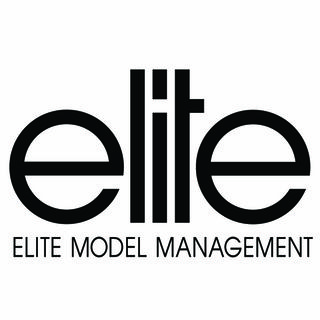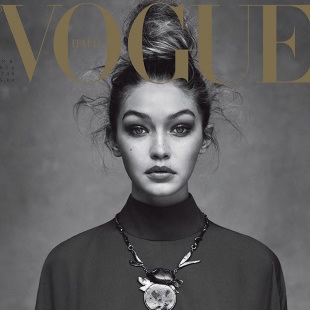A decade ago, if you wanted to become a model it was much more difficult and aspiring models generally had to look a certain way. Today, the modelling industry has grown massively and there is much more room for variety. There are many different areas of modelling in which models of all shapes and sizes are in demand, which has made modelling much more accessible.
“Knowing which type of model you are is critical to your success.”
The biggest mistake we see aspiring models make is aligning themselves to the wrong type of modelling. If you don’t market yourself within the right area, you’ll be unlikely to get modelling jobs or agency representation.
Everything – having a perfect portfolio; contacting the right agencies; getting signed; getting booked for jobs; getting rebooked for jobs – comes back to knowing which type of model you are and maximising your chances within that area.
Here’s a breakdown of the most common areas of modelling, and the types of models who are best suited to each.
Want to become a model? First know your type.
Fashion Modelling
Modelling Types | Become a Model
“Fashion Modelling is the type of modelling that the majority of people know about, but it’s not the only type of modelling.”
This is what most people think of when they think of modelling. It’s the most high profile area, but it’s also one of the most difficult to get into.
Fashion modelling is about promoting high fashion, and covers a broad range of mediums from runway modelling to editorial shoots to fit modelling for designer brands. The requirements for a fashion model are stringent.
Female models mostly need to be over 5’9 and male models over 5’11, and must be slender, striking and have an unusual or exotic beauty. (Read more on fashion modelling)
Commercial Modelling
Modelling Types | Commercial Modelling
“Commercial modelling is all about promoting products or services, so there’s much more variety in the type of model that ‘sells’.”
A company marketing tech and gadgets, for example, is going to want someone very different to a company marketing washing powder.
It’s the largest area of modelling because the requirements are much less proscriptive, and many successful commercial models look like normal, everyday people.
The most important requirement for a commercial model is to be able to act. Whether you’re appearing in TV, online or in print, you’re selling an image. Actors often cross over into commercial modelling for that reason – you need to be able to capture an emotion, on demand and on repeat. (Read more on commercial modelling)
Character Modelling
“Character models come in all shapes and sizes, but they are fantastic at portraying different characters and taking on different briefs. This is our model Deepak Anand featured in Vice Magazine.”
Character models play a character as an extra in films or TV, or model in commercials or promotions. There’s no specific requirement for a character model in terms of height, weight, body type or age.
Character models will be best suited to certain roles – if you look like a mechanic, for example, you probably don’t look like a grandmother!
Low barrier to entry in the character modelling industry means competition is fierce, though. Making sure you stand out from the crowd means being professional, committed and likeable – so clients want to work with you. (Read more on character modelling)
Glamour Modelling
Modelling Type | Lingerie Models[Source | Source]
“Glamour Modelling is used to sell an image. Glamour models tend to be sexy, both male and female. Male models are well toned and women are curvaceous.”
Rather than promoting a product or service, glamour modelling is used to sell an image. Glamour models convey an image of sexiness, and models are generally well toned (men) or curvaceous (female).
There are various types of glamour modelling, including lingerie, swimwear and Page 3. Glamour models might do editorial work, or online work such as live webcam are easy to get into and can be highly lucrative. (Read more on glamour modelling)
Body Parts Modelling
Modelling Type | Hand Modelling
[Source | Source]
“Body Parts modelling is another section to the commercial modelling world. There are jobs out there for body part models but the work is less frequent than that of a broader commercial model.”
Body parts modelling refers to, as the name suggests, modelling a part of the body, generally in print or film. The most common types of body parts modelling are:
Hair modelling – Hair product ads demand healthy, versatile hair
Legs modelling – Long, shapely legs are made for leg modelling
Hand/Feet modelling – graceful hands and impeccable nails are a must
(Read more about body parts modelling)
Petit or Plus Sized Modelling
Modelling Type | Plus Size Model[Source | Source]
“Tess Holliday is a plus size model making waves in the industry. She’s a size 22 and has recently headed up a campaign with H&M“
There’s an increasing realisation amongst professionals in the fashion industry that the everyday consumer comes in more than one shape and size.
We’re seeing more clothes being designed for plus and petit-sized women, and as a result there’s more demand than ever to model those clothes. Petit models are generally between 5’5 and 5’7 in sizes 6 to 10, and plus-sized models will generally by 5’9 and up, from a size 12 upwards. (Read more on plus sized modelling or more on petit modelling)
Child, Teen and Classic Modelling
Commercial Modelling
“No matter how old you are, a modelling career could be a viable option for you. Age is only a number and it is more about what you can do and how photogenic you are. That is not to say that anyone and everyone can model though…”
You can become a model at all ages. Child modelling can be very lucrative, and is mostly personality based. If your child is happy and well-behaved, they could make a great child model. Any product marketed for children or babies needs a child model, so the opportunities in this field are vast.
(Read more on child modelling)
Teen modelling can be a fantastic foundation for a career as an adult model, and the opportunities here are vast as the teen demographic is very lucrative for advertisers. Teen models have to have the ‘look’ the client wants, but personality is equally important.
It’s also recommended that teen models have other skills and hobbies as these demonstrate passion and personality – something all directors look for. Versatility is critical to teen models, as you’ll likely work across many mediums and it will help you lay a better foundation for a modelling career as an adult.
(Read more on teen modelling, or read our advice to parents of child or teen models)
At the other end of the spectrum, there doesn’t have to be an upper age limit on modelling. Classic modelling refers to models who are around 35 or older, and the demand for this is increasing. It’s never too late to build a career as an older commercial model.
(Read more on classic modelling)
These are some of the main types of modelling, but it isn’t a complete list. The modelling industry changes to reflect advertising demand – so as demand increases, new types of modelling spring up to meet it.
Knowing which type of modelling you’re best suited to is absolutely critical if you want to become a model, because it will allow you to maximise your chances of getting booked within that sector. As the industry becomes increasingly diverse, it’s never been a better time to be a model – but it’s more important than ever to know your look.
We Are Models offer a bespoke model consultation to help you decide your look and position yourself competitively for modelling jobs. We have relationships with some of the top modelling agencies and casting directors in the world, so we understand what they’re looking for and how to give you the best chances of success.







Comments 0